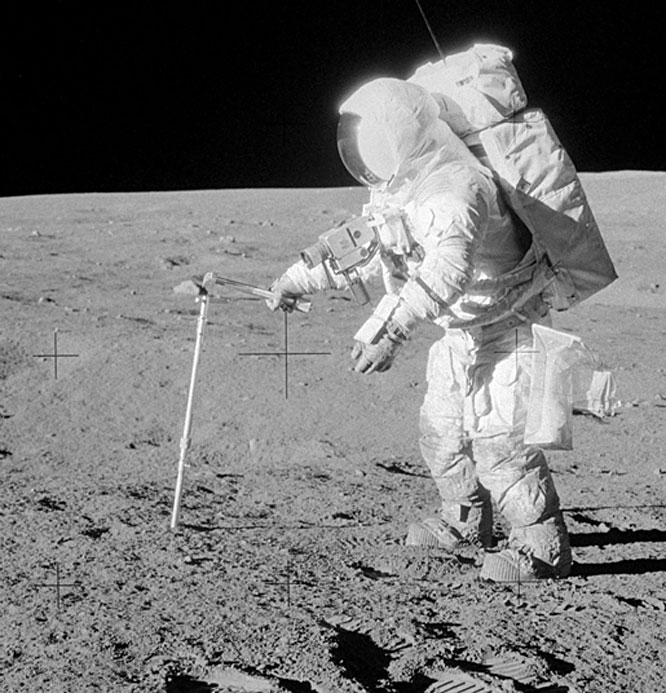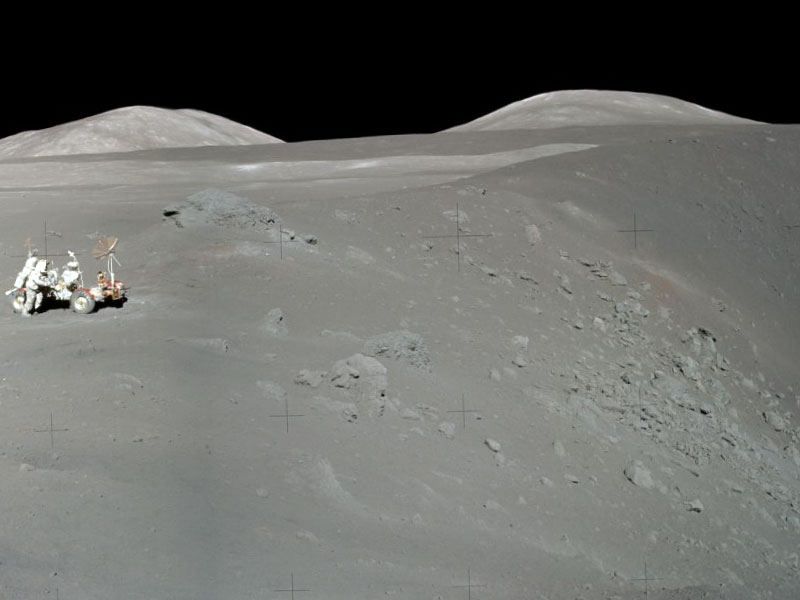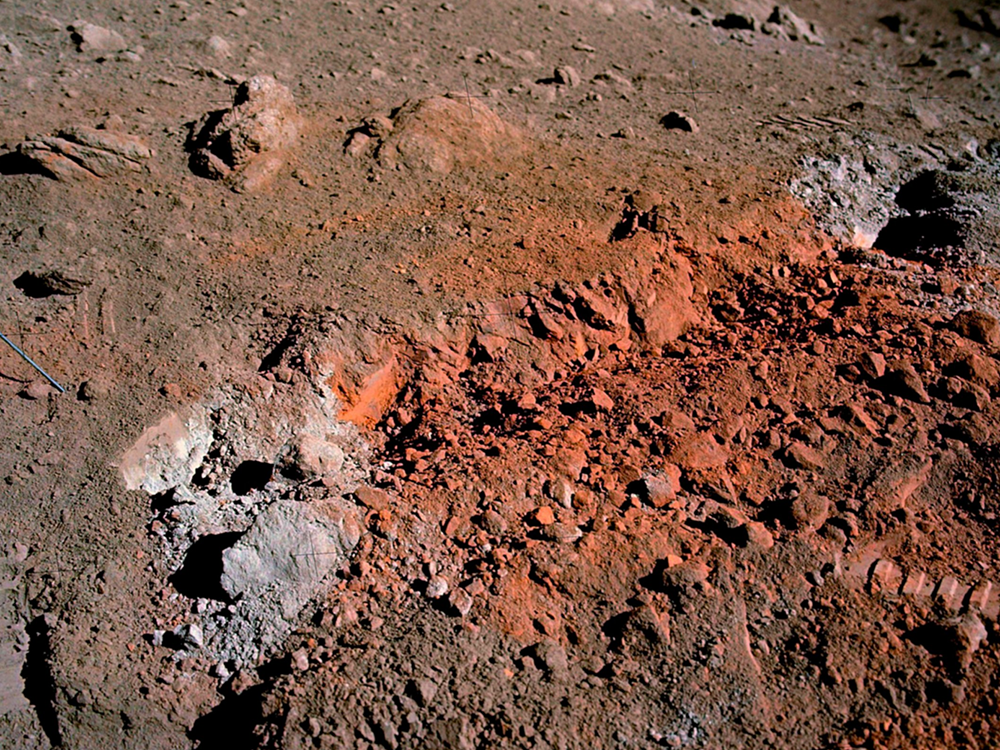
Fact sheet
Sample 74220 is an unusual soil sample that was discovered at Shorty Crater during the Apollo 17 mission to the Moon. The sample is part of the splatter from a volcanic eruption on the Moon that formed a pyroclastic deposit, and has the same age as the lunar Mare basalts – 3.6 billion years old.
Most of the sample consists of orange glass spheres, although a proportion of the glass has devitrified and is now black where fine olivine needles and ilmenite feathers have grown. Compositionally the black ‘glass’ is identical to the orange glass. Sample 74220 is an unusual sample that was discovered at Shorty Crater. The sample is part of the splatter from a volcanic eruption on the Moon that formed a pyroclastic deposit, and has the same age as the lunar Mare basalts – 3.6 billion years old.
Further details of this and other Apollo samples are here: http://curator.jsc.nasa.gov/lunar/
Apollo 17, the final manned landing mission, had two objectives: to obtain samples of ancient rocks from the lunar highlands and to look for evidence of younger volcanic activity on the valley floor.
This small Collection contains material deriving from both periods, including igneous rocks around 4.3 billion years old from the lunar highlands as well as younger volcanic samples dating from about 3.6 billion years ago.
Apollo 17 was launched on 7 December 1972.









